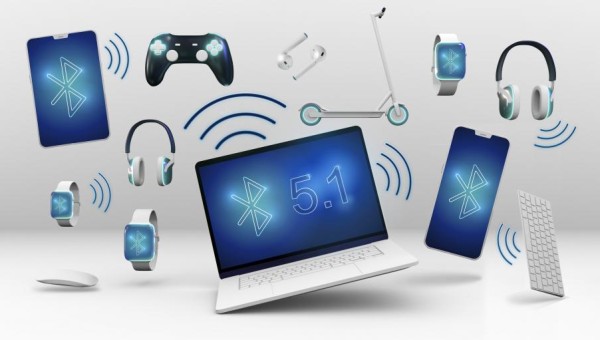
The Potential of Wireless Testing Technology for Bluetooth
In an era where seamless connectivity is the norm, Bluetooth technology stands as a cornerstone for wireless communication. However, ensuring its efficiency and reliability requires robust testing methodologies. Enter wireless testing technology for Bluetooth, a critical component in guaranteeing optimal performance and user satisfaction. In this comprehensive guide, we delve into the intricacies of this technology, exploring its significance, methodologies, challenges, and future prospects.
Understanding Wireless Testing
The Fundamentals of Bluetooth
Bluetooth, a standard for wireless technology, enables short-range communication among devices. Initially developed by Ericsson in 1994, Bluetooth has evolved into a ubiquitous feature in modern gadgets, enabling data transfer, audio streaming, and device connectivity.
Importance of Quality Assurance
In the realm of wireless communication, ensuring the quality and reliability of Bluetooth connections is paramount. Quality assurance methodologies, including rigorous testing procedures, play a pivotal role in identifying and rectifying potential issues before they impact end-users.
Challenges in Wireless Testing Technology for Bluetooth
Interference Mitigation
One of the primary challenges in Bluetooth testing is mitigating interference from other wireless devices operating in the same frequency spectrum. Effective interference mitigation strategies are essential to maintain signal integrity and minimize data loss.
Compatibility Testing
With an array of Bluetooth-enabled devices flooding the market, ensuring compatibility across different hardware and software configurations poses a significant challenge. Comprehensive compatibility testing is essential to guarantee seamless interoperability among diverse devices.
Performance Optimization
Optimizing the performance of Bluetooth connections involves fine-tuning parameters such as signal strength, data transfer rates, and power consumption. Thorough performance testing is crucial to maximize efficiency and enhance user experience.
Testing Methodologies
Protocol Analysis
Protocol analysis involves dissecting Bluetooth communication protocols to identify irregularities and ensure compliance with industry standards. Specialized tools and software are utilized to capture and analyze Bluetooth packets, enabling thorough protocol validation.
RF Testing
Radio frequency (RF) testing focuses on assessing the wireless transmission characteristics of Bluetooth devices. RF testing involves measuring parameters such as signal strength, modulation quality, and frequency stability to evaluate performance under various conditions.
Conformance Testing
Conformance testing verifies adherence to Bluetooth specifications outlined by the Bluetooth Special Interest Group (SIG). By subjecting devices to standardized test cases, conformance testing ensures compatibility and interoperability across different vendors and implementations.
Future Trends and Innovations
5G Integration
The integration of Bluetooth technology with emerging 5G networks presents exciting opportunities for enhanced connectivity and IoT applications. Leveraging the speed and reliability of 5G, future Bluetooth devices are poised to deliver unparalleled performance and efficiency.
AI-driven Testing
The advent of artificial intelligence (AI) promises to revolutionize Bluetooth testing methodologies. AI-driven algorithms can analyze vast amounts of data, identify patterns, and optimize testing processes, ultimately enhancing accuracy and efficiency.
IoT and Smart Devices
The proliferation of Internet of Things (IoT) devices underscores the need for robust Bluetooth testing solutions. As smart devices become increasingly interconnected, comprehensive testing frameworks will be crucial to ensure seamless communication and functionality.
FAQs (Frequently Asked Questions)
Q-How does wireless testing technology benefit Bluetooth development?
A-Wireless testing technology enables developers to identify and rectify issues early in the development cycle, ensuring robust performance and reliability of Bluetooth-enabled devices.
Q-What role does interoperability testing play in Bluetooth certification?
A-Interoperability testing verifies the compatibility of Bluetooth devices with different manufacturers’ products, facilitating Bluetooth SIG certification and ensuring seamless connectivity in real-world scenarios.
Q-How can RF testing help optimize Bluetooth performance?
A-RF testing allows manufacturers to fine-tune antenna design, transmission power, and frequency characteristics, optimizing Bluetooth performance for various usage scenarios and environments.
Q-What are the challenges of testing Bluetooth Low Energy (BLE) devices?
A-Testing BLE devices presents unique challenges due to their low power consumption and intermittent data transmission. Specialized testing methodologies are required to assess BLE performance accurately.
Q-Is Bluetooth testing necessary for consumer electronics products?
A-Yes, Bluetooth testing is essential for ensuring the quality, reliability, and compliance of consumer electronics products with Bluetooth standards and specifications.
Q-How can AI enhance Bluetooth testing processes?
A-AI-powered algorithms can analyze complex data patterns, predict potential issues, and optimize testing parameters, leading to more efficient and accurate Bluetooth testing processes.
Conclusion
In conclusion, wireless testing technology plays a pivotal role in ensuring the reliability, performance, and interoperability of Bluetooth-enabled devices. By leveraging advanced testing methodologies and embracing emerging trends, manufacturers can deliver innovative products that meet the evolving needs of consumers in an increasingly connected world.
Call To Action
Contact us today for Free Consultation at (480) 684-2969! We’re here to answer your questions, discuss your project requirements, and provide a free consultation. Let’s work together to ensure your products meet all EMC compliance standards and unlock their full potential in the global marketplace.

One Response